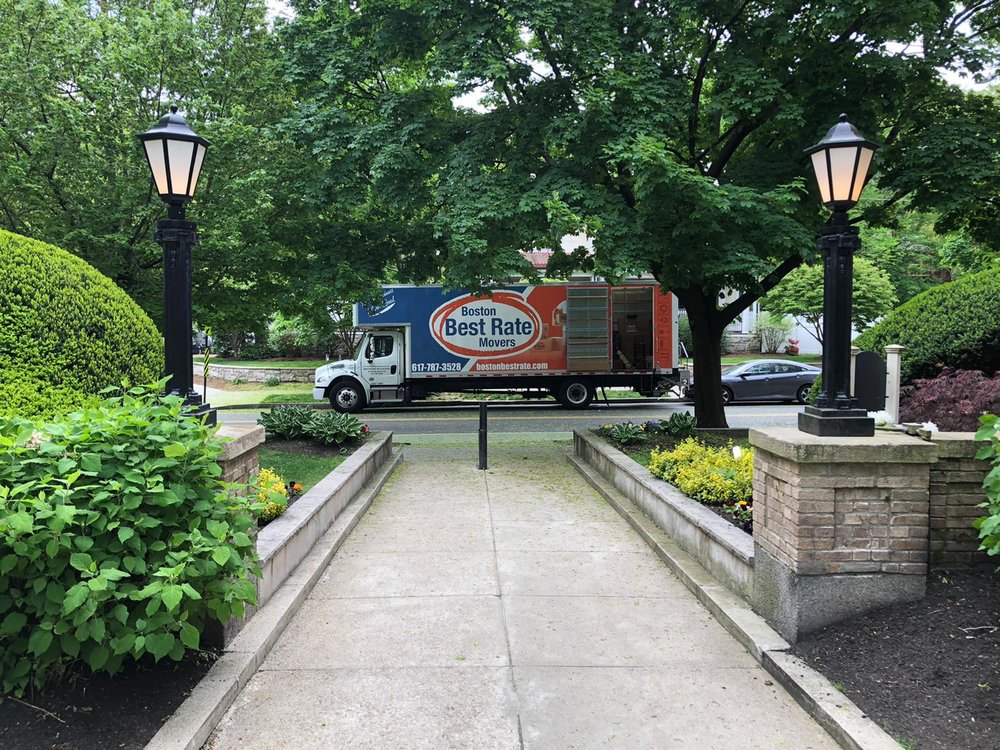Moving to a new home can be exciting, but the packing process can be overwhelming, especially if you have a lot on your moving checklist. Fear not! We've got you covered with this comprehensive guide on how to pack for a move.
Whether you're moving down the street or across the country, these moving tips and tricks will help you pack efficiently and guarantee your belongings arrive safely at your new abode.
Sorting and Decluttering
Assessing your belongings
Before diving into the packing madness, declutter and assess your belongings. Go through each room and separate items into four categories: keep, donate, sell, or discard. Not only will this make the packing process more straightforward, but it'll also help you start fresh in your new space.
Room-by-room sorting strategy
Tackle one room at a time to avoid feeling overwhelmed. Start with spaces like the attic, basement, or garage, where you might find forgotten treasures or items you no longer need. Then, move on to the more frequently used rooms, like the living room, kitchen, and bedrooms.
Letting go of unnecessary items
Saying goodbye to belongings with sentimental value can be challenging. Ask yourself whether the items bring you joy or serve a practical purpose. If the answer is no, it might be time to part ways. Consider taking photos of sentimental items to preserve the memories without the physical clutter.
Creating an Efficient Packing Strategy

Inventorying your belongings
Create an inventory list of your belongings as you pack. This can be as simple as using a notepad or a smartphone app. An inventory list of your belongings will help you keep track of everything and make unpacking more organized.
Grouping items by category or room
Pack similar items together to make unpacking a breeze. Label your boxes with the rooms they belong in and brief descriptions of their contents. This way, you won't search multiple boxes to find essentials.
Color-coding and labeling boxes
Make your packing system even more efficient by using color-coded labels or stickers for each room. For example, use blue for the bedroom and green for the kitchen. This will help movers know where to place each box in your new home.
Prioritizing essential items
Pack a separate box with the essentials you'll need immediately upon arrival. This "first-night box" should include toiletries, a change of clothes, bedding, essential documents, and any other items you can't go without for a day or two.
Preparing an overnight bag with necessities
In addition to the first-night box, pack an overnight bag with essentials like clothes, medications, and personal items to have everything you need during the transition without digging through boxes.
Packing Room by Room

Kitchen packing hacks
First, pack non-essential kitchen items, such as extra cookware and small appliances. Use dish towels or bubble wraps to protect breakables like glassware and dishes. Consider using sturdy plastic containers for pantry items to avoid spills.
Packing electronics and cables safely
Take photos of the electronic connections and wiring before disassembling them. Label the cords and cables so you know which device they belong to. Use original packaging whenever possible; if not available, pack electronics in moving boxes with ample padding.
Folding, hanging, and packing clothes
Fold clothes neatly to maximize space in boxes. Use wardrobe boxes with built-in hanging rods for delicate or formal clothing to keep them wrinkle-free during the move.
Securely packing books and documents
Books can be heavy, so use small boxes to avoid overloading. Place books upright, binding them down to prevent damage. Consider using a fireproof and waterproof moving container for extra protection for important documents.
Mastering the Art of Packing Fragile Items

Using proper packing materials
Invest in quality packing materials to protect delicate items adequately. Bubble wrap, packing paper, foam, and packing peanuts will be your best friends during this process.
Safely wrapping and padding fragile objects
Wrap fragile items generously with bubble wrap or packing paper and secure them with tape. Use soft materials like towels or blankets to pad spaces between items to prevent shifting.
Furniture disassembly and protection
Disassemble furniture when possible, and keep screws and hardware in labeled bags taped to the furniture. Use furniture blankets or bubble wraps to protect surfaces and corners.
Safeguarding mirrors, frames, and artwork
Use specially designed mirror and picture boxes to protect mirrors, frames, and artwork. Reinforce the corners and edges with additional padding.
Precautions for antiques and valuables
Consider hiring professional packers or using custom crates for added protection for antiques and valuables. Invest in moving insurance to provide coverage for high-value items.
Maximizing Space and Efficiency

Utilizing small and odd-shaped items
Pack smaller items inside larger ones when possible to save space. Fill the gaps in boxes with soft items like clothes, linens, or towels to prevent shifting.
Filling empty spaces in boxes to prevent movement
Avoid leaving empty spaces in boxes, as this can lead to items shifting and potentially getting damaged. Use packing papers or bubble wraps to fill any voids.
Packing a moving truck strategically
Load the heaviest and sturdiest items first, distributing weight evenly across the truck. Place essential boxes towards the front for easy access upon arrival.
Properly stacking and arranging boxes
Stack boxes with the heaviest ones at the bottom and lighter ones on top. Avoid stacking boxes too high to prevent them from toppling over.
Using space bags for bulky bedding and clothes
Space-saving bags are excellent for compressing bulky items like comforters, pillows, and seasonal clothing. They not only save space but also keep items clean and protected.
Handling Special Items

Disconnecting and securing appliances
Before moving appliances, disconnect them from the power source and secure any movable parts. If possible, refer to the manufacturer's instructions for proper preparation.
Transporting plants and greenery safely
Moving plants requires special care. Trim the foliage, place them in ventilated boxes, and secure the pots to prevent soil spillage. Keep plants in a climate-controlled area during transit.
Stress-free transition for pets
Moving can be stressful for pets. Keep them in a quiet and familiar room on a move day, and transport them in a secure carrier. Once at the new home, give them everyday belongings and time to adjust.
Storing hazardous materials properly
Dispose of hazardous materials you cannot safely transport. Properly pack and label any remaining dangerous materials according to local regulations.
Packing musical instruments and sports equipment
Use hard-shell cases for protection for delicate instruments, such as guitars or violins. Disassemble sports equipment when possible and store small pieces in labeled bags.
Hiring a Professional Moving Company

Conduct a comprehensive research
Take your time to research moving companies and ask for recommendations from friends and family. Choose a licensed and insured company with a track record of reliable service.
Understand moving insurance options
Moving insurance provides peace of mind during the moving process. Review the insurance options your chosen moving company offers and consider additional coverage if needed.
Compare quotes and service packages
Obtain detailed quotes from multiple moving companies, including all services and fees. Compare the packages and choose the one that suits your needs and budget.
Ensure you communicate clearly with the movers about your expectations and any specific instructions.
Be available to answer questions and provide guidance throughout the moving process. Also, inform the moving company about sensitive or valuable items requiring special care. If possible, transport high-value items personally to ensure their safety.
Ready to Make Your Move?
Now that you know how to pack for a smooth move, it's time to implement these packing and moving tips! Start sorting, decluttering, and organizing your belongings to make packing a breeze. However, it is best to contact professional movers if you need assistance. Remember, a well-planned and efficient move can make all the difference in turning your new house into a home.



.jpg)



